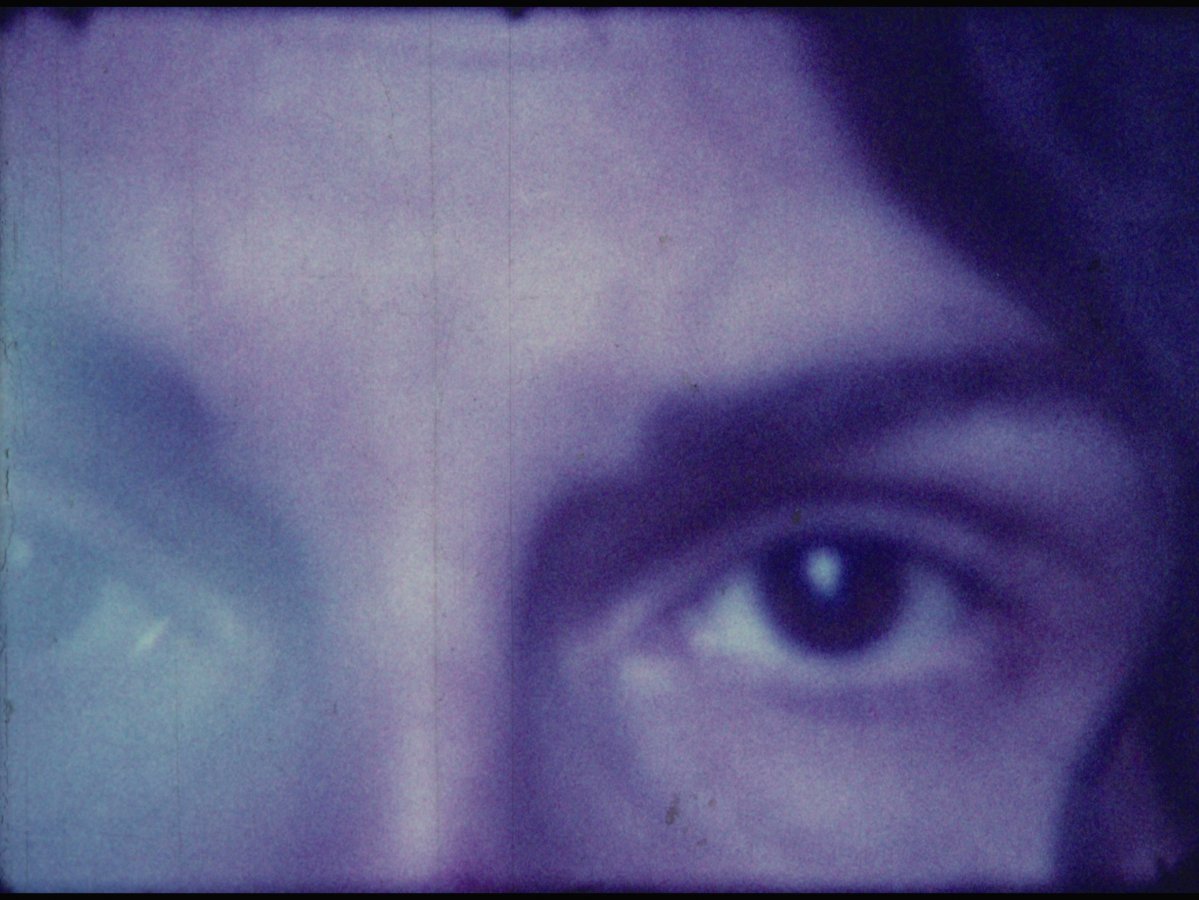La nott'e'l giorno
un film di Gianni Castagnoli
In occasione della XI edizione di Archivio Aperto, all'interno di un focus sul cinema sperimentale nel '68, Raum ospita due eventi dedicati all'expanded cinema italiano con la presentazione di rari super 8 e 16 mm di Gianni Castagnoli (1 dicembre) e di Andrea Granchi (2 dicembre). Due personalità che mostrano il 'cinema' italiano nella sua visionaria e unica varietà di approcci alle immagini in movimento. Questa uscita dagli archivi è un momento per portare alla luce nuove scoperte incredibilmente attuali riguardo il nostro immaginario tecnologico ed inconscio ottico.
Sabato 1 dicembre 2018 Xing e Home Movies/Archivio Aperto presentano a Raum La nott'e'l giorno (1976), un film dell'artista e film-maker Gianni Castagnoli che ha visto il coinvolgimento di altri protagonisti dell'avanguardia in Italia, tra cui Patrizia Vicinelli e Alvin Curran. (Proiezione dell’edizione di Home Movies in 16mm da originale Super 8 e banda magnetica 1/4”).
La nott'e'l giorno di Gianni Castagnoli, capolavoro del cinema indipendente degli anni '70, è il frutto di un montaggio ritmico e ossessivo di riprese girate tra il 1973 e il 1976 in diversi ambienti, città, situazioni e condizioni di luce estremamente differenti: tra il giorno e la notte. Nel ritmo visionario e rapido delle immagini, che ricorda a tratti il cinema di Jonas Mekas e Stan Brakhage, contraddistinto da improvvisi rallentamenti, un'ossessione per il dettaglio ma anche l'insistenza del campo lungo, si condensano la vita e le esperienze intime del cineasta, della sua compagna, la poetessa Patrizia Vicinelli, protagonista del film insieme a lui e agli artisti e amici incontrati attraverso un lungo viaggio. Partiti dalla loro città, Bologna, attraversano i continenti, dall'Europa all'America, fino all'Africa. Lo spazio e il tempo si fondono in uno sguardo che sfugge i contorni, lambisce i bordi delle finestre e passa attraverso vetri deformanti in un gioco di cornici che si aprono e chiudono in continuazione. La musica composta per il film da Alvin Curran entra in simbiosi con questi ritmi, esalta l'intimità di un diario che diviene universale come trascrizione lirica di sensazioni, tensioni e caos. La nott'e'l giorno rimane sospeso tra la bellezza sorprendente del quotidiano, la potenza della luce e il richiamo della notte con le sue ombre, e dopo oltre quarant'anni si rivela un'imprescindibile testimonianza artistica, umana e storica di un'epoca di utopie e distruzioni.
***
On the occasion of the 11th edition of Archivio Aperto, within a focus on experimental cinema in '68, Raum hosts two events dedicated to expanded Italian cinema with the presentation of rare super8 and 16 mm by Gianni Castagnoli (1 December) and Andrea Granchi (2 December). Two personalities which show the Italian 'cinema' in its visionary and unique variety of approaches to moving images. This exit from the archives brings to light incredibly current new discoveries about our technological imaginary and optic unconscious.
On saturday 1 december 2018 Xing and Home Movies present at Raum La nott'e'l giorno (1976), a film by the artist and film-maker Gianni Castagnoli that involved other protagonists of the italian post-war avant-garde, including the poet Patrizia Vicinelli and the composer Alvin Curran. (Screening of Home Movies edition in 16mm from original Super 8 and 1/4" magnetic strip).
La nott'e'l giorno (Night 'n' Day), a masterpiece of independent cinema of the '70s, is the result of a rhythmic and obsessive editing of shots in Super8 mm taken between 1973 and 1976 in various environments, cities and situations in very different light conditions: between day and night. The life and the intimate experiences of the filmmaker and of his partner, the poet Patrizia Vicinelli, who is the main subject of the film along with the artists and friends the filmmaker met during the course of a long journey, are condensed into the visionary rhythm of the images. The pace is extremely rapid, -at times it recalls the cinema of Jonas Mekas and Stan Brakhage- marked by sudden slowdowns and also by an obsession with detail and with the long shot. Departing from their hometown of Bologna, they cross continents, from Europe to America and then to Africa. Space and time merge in a gaze that escapes contours, touches the edges of windows and passes through deforming glass in a play of frames that open and close continuously. The music composed for the film by Alvin Curran enters into symbiosis with these rhythms and enhances the intimacy of a diary that becomes universal, as a lyrical transcription of sensations, tensions and chaos. The night remains suspended between the amazing beauty of everyday life, the power of light and the call of the night with its shadows, and after more than forty years it has shown itself to be an indispensable artistic, human and historical testimony of an era of utopias and destruction.

